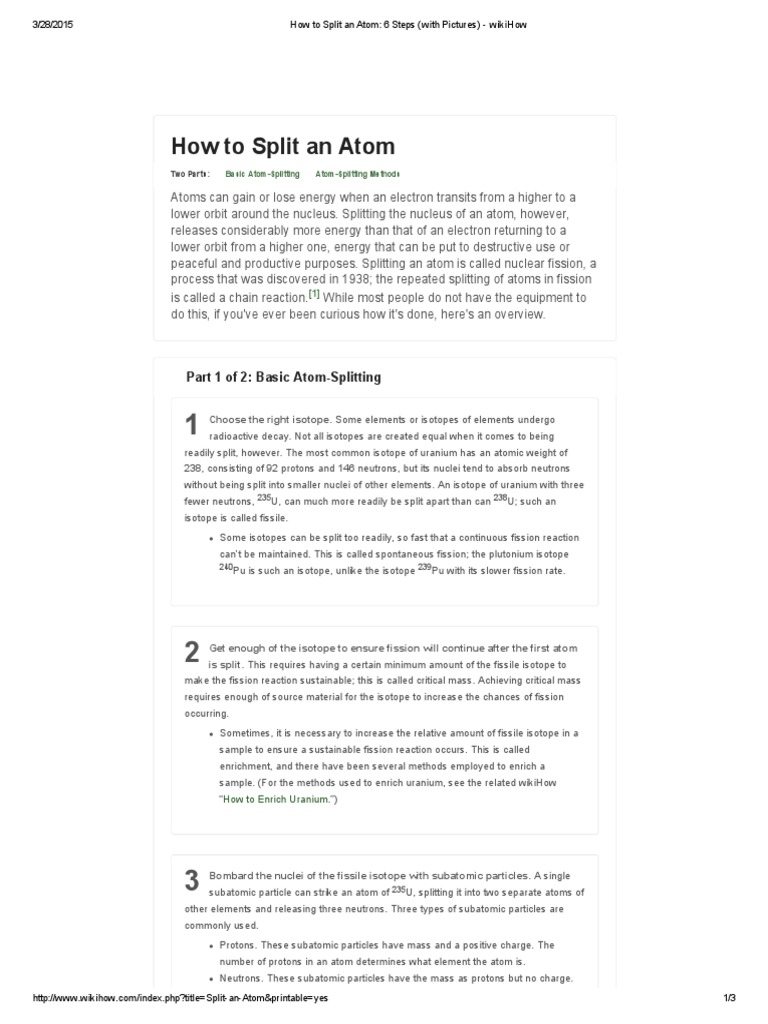The concept of a knife made out of neutrinos presents a fascinating thought experiment at the intersection of particle physics, material science, and the complexities of atomic structure. To embark on this intellectual journey, we must first comprehend the properties and behaviors inherent to neutrinos and disassemble the fundamental processes involved in atomic splitting.
At the crux of this inquiry is an understanding of what neutrinos are. Neutrinos are elementary particles categorized as leptons. They possess an astoundingly minuscule mass and evade electromagnetic forces, which renders them nearly undetectable and allows them to traverse matter with remarkable ease. Originating primarily from nuclear reactions, such as those occurring in the sun or during supernova explosions, neutrinos interact with matter only via the weak nuclear force, one of the four fundamental forces of nature. This elusiveness is pivotal in assessing the feasibility of utilizing neutrinos for atomic disassembly.
Splitting an atom typically refers to a process characterized as nuclear fission, where the nucleus of an atom is broken into smaller parts, often yielding a considerable amount of energy. This procedure is integral to both power production in nuclear reactors and the destructive power of atomic weapons. During fission, a nucleus absorbs a neutron, which destabilizes it and induces a chain reaction. The rarity of such interactions emphasizes the necessity of using particles capable of inducing a fissionable state effectively. Thus, we must explore if neutrinos, given their properties, could be utilized in a similar manner.
To evaluate this theoretically, one must consider neutrinos’ interaction cross-section, which is exceedingly low—approximately one billion times smaller than that of a proton. The implications of this characteristic are profound; a neutrino could efficiently pass through light years of lead without any interaction. Therefore, the concept of wielding a “neutrino knife” as a tool for splitting an atom becomes increasingly untenable. The very nature of a knife implies a certain degree of physicality and force application, both of which starkly contrast with the intangible essence of neutrinos.
Now, let us delve into the mechanics of atomic structures. An atom consists of protons and neutrons encased within a nucleus, while electrons orbit this nucleus in defined energy levels. The forces binding these components involve a delicate interplay of electromagnetic forces (between protons and electrons) and nuclear forces (between nucleons). For a “neutrino knife” to effectively split an atom, it would necessitate the ability to disrupt these strong and weak interactions at a level that is not only improbable but also fundamentally misaligned with the mechanics of particle interaction.
Furthermore, examining the hypothetical nature of a knife fashioned from neutrinos leads us into the concept of “virtual particles.” In quantum field theory, virtual particles are transient fluctuations that occur within the confines of quantum mechanics. They could elucidate a potential approach for creating an effective interaction device through the proliferation of high-energy neutrinos. However, the practicality of an instrument capable of generating a concentrated beam of neutrinos to induce fission remains within the ambit of speculative technology, with current accelerator-based neutrino generation still requiring vast amounts of energy and infrastructure.
Should one entertain the notion of a practical application involving such neutrino interactions, one might succumb to the allure of imagining advanced technologies that could manipulate quantum states. Quantum entanglement and tunneling principles suggest methods through which interactions could hypothetically induce particle behavior that differs from classical expectations. Speculatively, if a neutrino knife could engender localized disturbances in atomic nuclei through such advanced quantum manipulations, we might breach the threshold of traditional nuclear physics. Nevertheless, any viable implementation of such technologies exists only within the realm of futurist conceptualization.
The ethical implications of utilizing any new technology to manipulate nuclear materials—whether through particles like neutrinos or otherwise—should also be considered. The repercussions of nuclear fission are profound, capable of yielding both unprecedented energy sources and devastating weaponry. Delving into the aforementioned specter of neutrino-based interactions raises essential questions about responsibility and governance in scientific inquiry.
In contemplating the ultimate hypothesis that a knife made of neutrinos could split an atom, one must firmly ground the discussion in a reality governed by the laws of physics as they stand today. The limitations imposed by neutrino interaction capability render the direct application of such an idea impractical. Rather, this thought experiment underlines the vibrant and often paradoxical nature of particle physics, which inspires a deep appreciation for the complexity of the building blocks of our universe.
Ultimately, while a neutrino knife remains an imaginative construct lacking practical applicability, it serves as a beacon of curiosity. This concept invites ongoing exploration into the domains of particle physics and the existential inquiries surrounding fundamental forces. The juxtaposition of what is theoretically conceivable against the constraints of current scientific understanding illuminates the path for future innovations in atomic and subatomic research.












